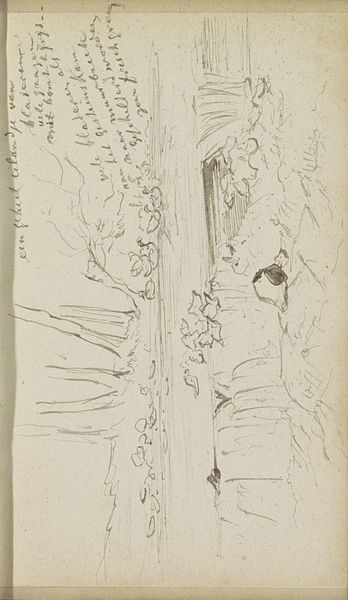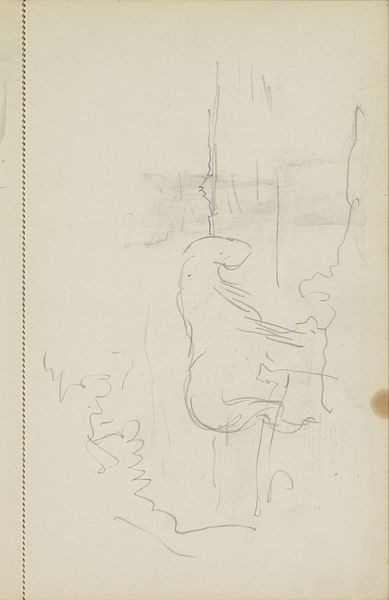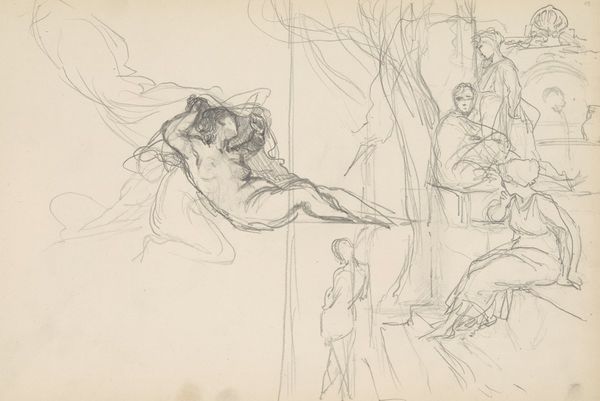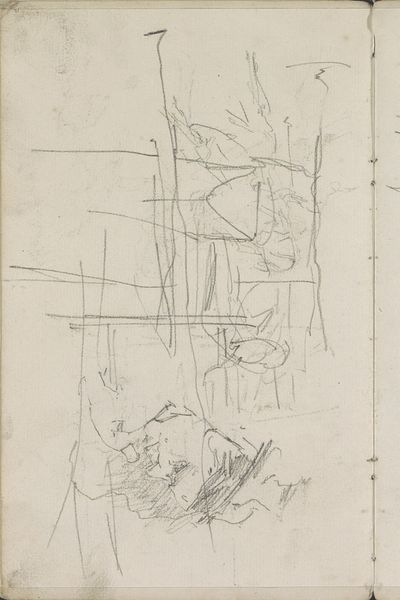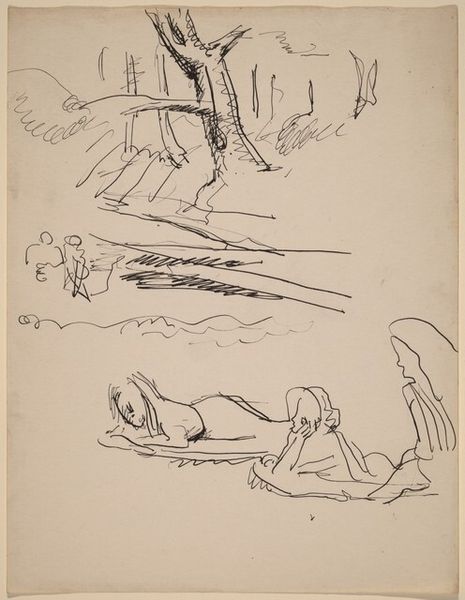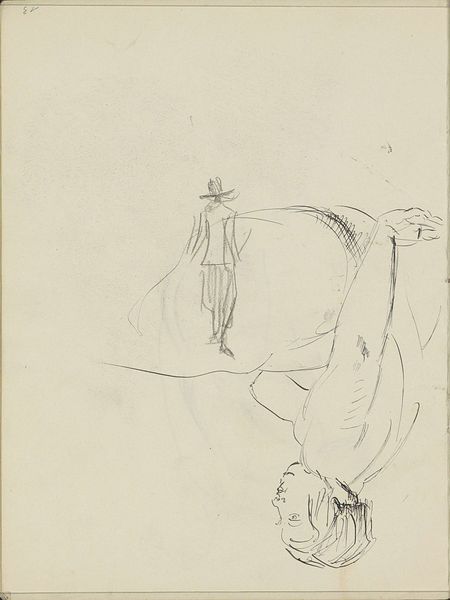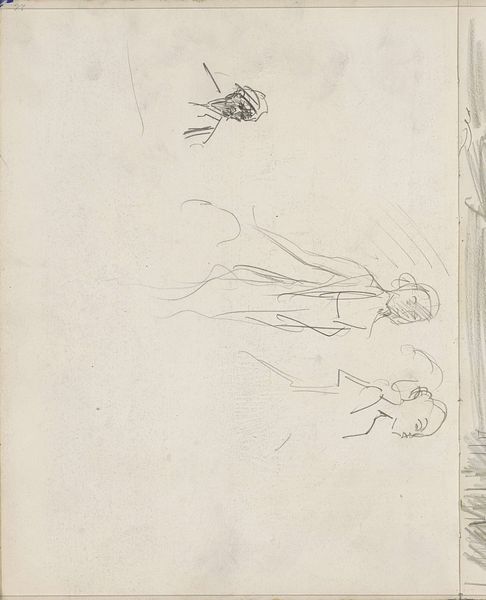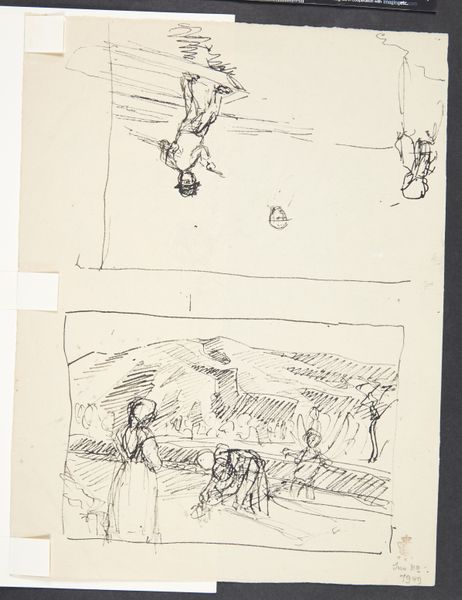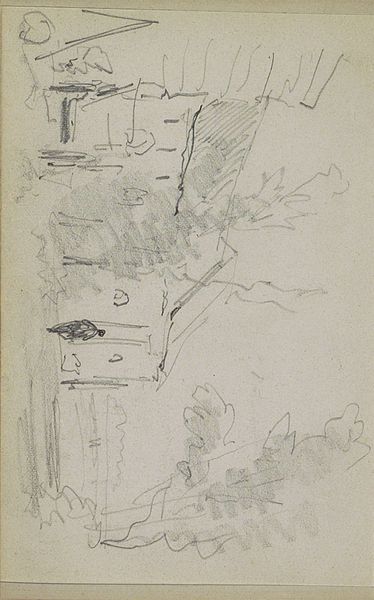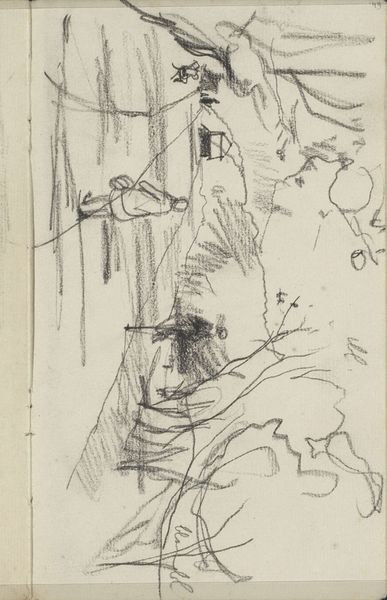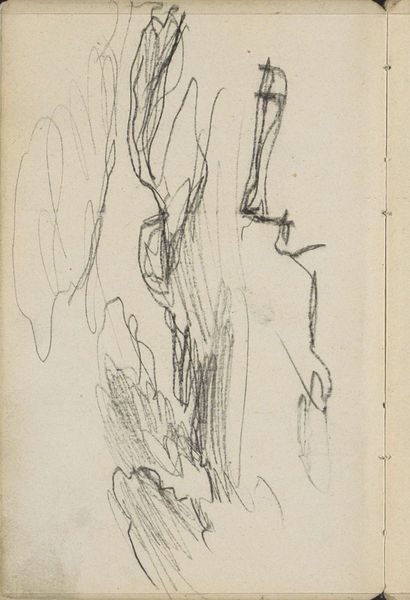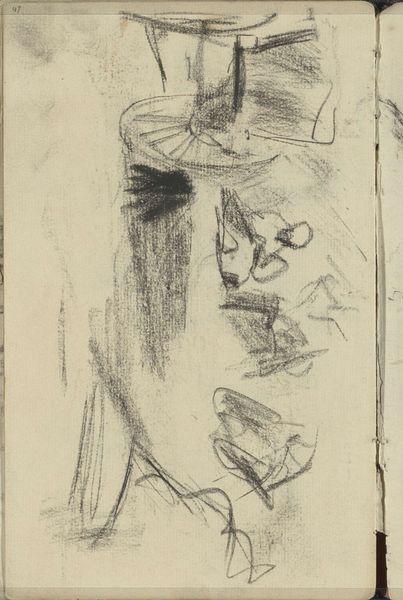
Sheet of Studies, Including a Roman Head, a Male Figure on a Pyre, and a Colonnade. 1746 - 1799
0:00
0:00
drawing, print, ink
#
portrait
#
drawing
#
head
# print
#
figuration
#
romanesque
#
ink
#
history-painting
#
profile
Dimensions: 11-1/8 x 8-1/8 in. (28.3 x 20.6 cm)
Copyright: Public Domain
Curator: Let's examine "Sheet of Studies, Including a Roman Head, a Male Figure on a Pyre, and a Colonnade" by Luis Paret y Alcázar, created sometime between 1746 and 1799. It's currently housed at the Metropolitan Museum of Art. Editor: Immediately, I’m struck by the economy of line. It feels almost like note-taking, a very efficient use of space and material. What kind of ink was common then? Curator: We can see that drawings like this provided the visual vocabulary for history paintings at the time. Artists were greatly impacted and inspired by the renaissance movement. They really sought to connect political ideas to artistic renderings. Editor: And did Paret commonly work in ink? These skeletal drawings, you know, that process of putting ink to paper suggests immediacy, a direct transfer from thought to form. It implies accessibility. The cost of the material itself influences how it’s received. Curator: Absolutely, and these studies really acted as cultural conduits, transporting visual ideas, and then shaping broader artistic dialogues of the time. Look at that classical head at the bottom – the way it anchors the composition. It’s very telling to observe the process through which antiquity became a language through which society then spoke. Editor: Yes, that’s it: “spoke”. And it speaks materially, doesn't it? The relatively simple method emphasizes access to even lower ranking people; those of minimal wage could have picked up the trade to relay political messages in some fashion or another. Curator: That said, the drawings clearly showcase artistic talent. The arrangement suggests he may have been organizing his compositions ahead of realizing larger history paintings. But they also betray a degree of theatricality that one wouldn’t expect! The figure on the pyre is so melodramatic. Editor: Melodramatic, perhaps, but there's also something immediate in the sketch, something tactile about the raw material used to bring us a perspective into a performance of emotion as well as an accessible mode of documentation and production. Curator: A fine line that seems to anticipate many cultural forces that continue to shape society today. Thanks for helping draw it out. Editor: My pleasure. I walk away with a whole new appreciation for material accessibility!
Comments
No comments
Be the first to comment and join the conversation on the ultimate creative platform.

